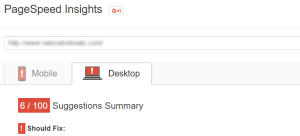“Shiny new website designer, you stand accused of crimes against SEO. The charges are as follows…”
To be fair, and especially for a new site, some of these ‘crimes’ will slip through the cracks – that happens. For a site relaunch though there’s no excuse (unless the site has been developed by your 13-year-old nephew). A relaunched site is the ideal opportunity to build on years of SEO, not to step back into the SEO dark-ages.
- Using ‘home’ anywhere within your home Page Title

Argh, I’ll kill that nephew of mine!
Yes, it is a home page, but the Page Title (especially on possibly your most popular page) is also one of the most powerful tags in your SEO arsenal. It’s a crime not to wring every last drop of SEO value from those precious 50 characters. Not just who you are, but what you do.
- Using default Page Titles

Tuscany what? History?Plumbers? Throw Google a bone at least!
Now this is a crime of laziness. You have a page on the web so that people can find you, but you don’t take the time to populate one of the key SEO elements?
- Missing Meta Descriptions
Sure, Google will populate your SERPs listing with what it thinks your page is about, but do you really trust Google to make that call? Your Meta Description is your chance to craft a 150 character enticement for people to click on your SERP, rich with keywords and Calls To Actions. Use it! - 404 Errors
Especially true following a major site redesign, chances are you’ll have new pages or existing ones will have new URLs, while Google and people’s Bookmarks will point to the old pages.
 Solution: find the top 10 pages most landed on, and ensure you’ve a 301 redirect in place to direct people gracefully from the old pages to the new. In doing so, you’ve reduced their new journey by several clicks, and you’ve told Google ‘hey, that page is now here!’
Solution: find the top 10 pages most landed on, and ensure you’ve a 301 redirect in place to direct people gracefully from the old pages to the new. In doing so, you’ve reduced their new journey by several clicks, and you’ve told Google ‘hey, that page is now here!’ - Not Updating Your Analytics
This is especially important for a redesign: without a planned transition you’ll end up loosing analytics data, without which you’ll find it hard to judge both SEO efforts and the User Experience.
While the development team are working feverishly on the look, your analytics team should be working on the substantial changes need to the analytics set-up. Which Goals, Segments, Filters, Views will need to be changed to reflect the new site structure, new URLs, new user flow? You need clean data for your analytics, because analytics is the key. - Failing to record your e-commerce conversions

A sale is great, it’s what it’s all about. But aren’t you a little bit curious as to how they got to that point? If you’ve not turned on e-commerce with Analytics, or if you’ve not implemented the tracking code properly, you’re in the dark: you can’t even begin attribution modelling or examining multi-channel funnels to see the real value of your channels. - Failure to review site performance in Google PageSpeed Insights

It’s time to panic when it’s in single digits…
Page Speed and general site performance are key elements in your ranking… and your visitor’s enjoyment of your site’s experience. No-one likes friction: slow loading pages, jerky infinite scroll effects. Google’s PageSpeed Insights tool shows you how Google sees your site’s performance. It’s there for a reason. Use it.
- Not defining a sitemap…
Or defining it wrong. For example, pointing your sitemap to your staging server will confuse the hell out of Google, and you use a site map precisely to clarify your site to Google. - Forgetting your Rich Snippets
Your Rich Snippets are another weapon in your SEO effort. Like many SEO elements it’s included in your arsenal because well anything that may help doesn’t harm. To have it, then lose it in a redesign, is a SEO crime. - Missing Call To Actions

Is this CTA big enough?
This is still an SEO issue as much as a usability one. You’ve spent time, effort & money to get people to your site. Help lead them where you want them to go!
